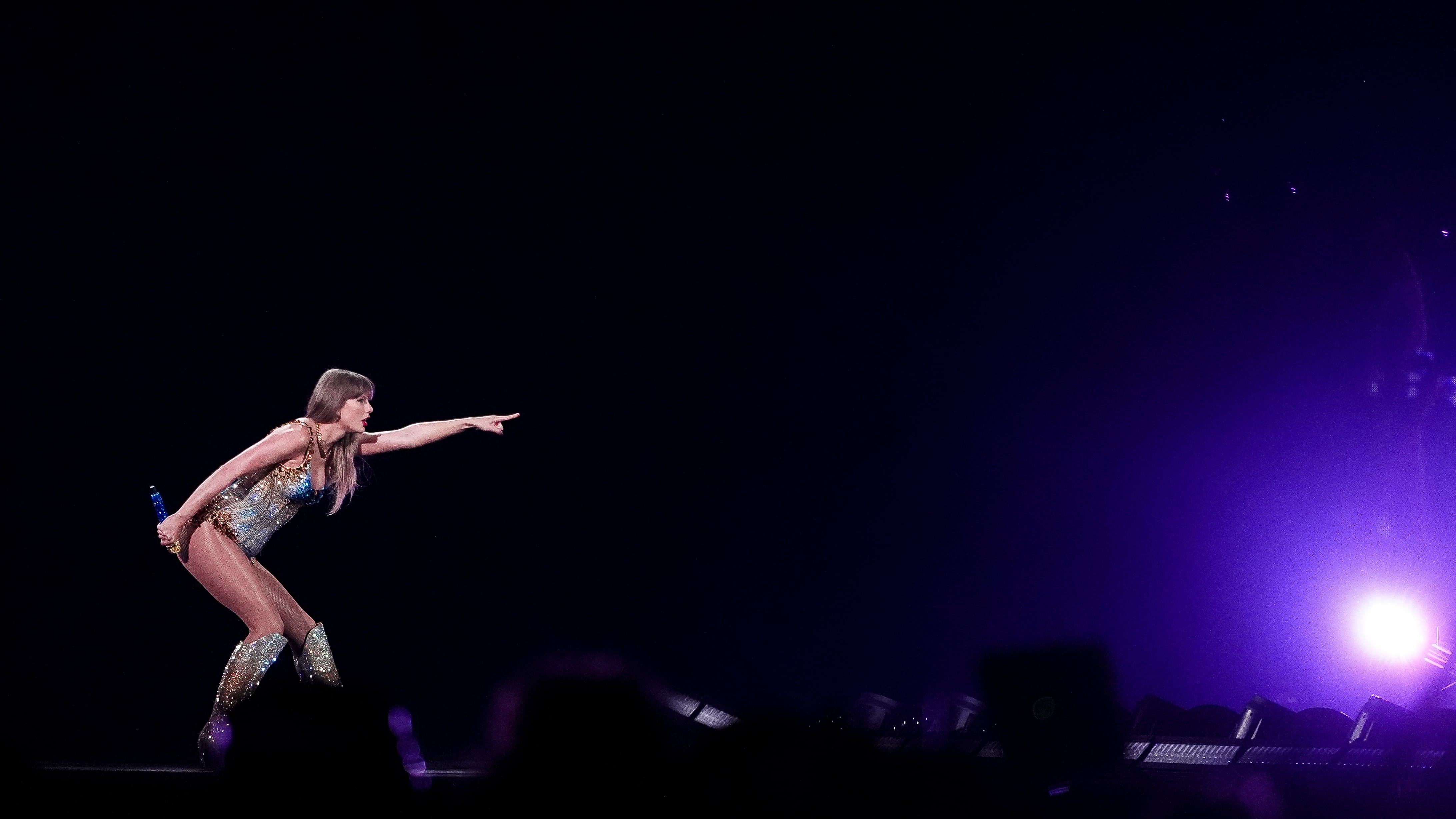With the release of her 12th studio album, “The Life of a Showgirl,” Taylor Swift is once again reinventing herself.
Less than a year after the end of The Eras Tour — featuring a three-and-a-half-hour set, more than 40 songs and about 16 costume changes each night — Swift is well-equipped to claim the title of showgirl.
Embracing the showgirl persona, Swift enters her boldest, most risqué era yet, a striking contrast to the small-town country girl she once was. Not only do eight out of 12 tracks on “The Life of a Showgirl” contain explicit content, but the promotional imagery for the album is also more provocative than that of previous releases.
To dress the part of the showgirl, Swift borrows a look from the Las Vegas show “Jubilee!,” which ran from 1981 to 2016. Designed by American fashion designer Bob Mackie, this costume features a crystal-embellished headpiece, bra and underwear worn atop lined fishnet tights that give the illusion of bare skin.
Swift’s other ensembles, styled by Joseph Cassell Falconer, play into this performance with feathered headpieces, wigs, opera gloves, chainmail and corsets. According to the talent agency Forward Artists’ website, Falconer has collaborated with Swift for over a decade “on a range of projects, from character-driven looks for videos to glamorous red carpet moments.”
However, “The Life of a Showgirl,” is not the first time Swift tried her hand at this particular character. In the “Bejeweled” music video, released alongside the 2022 album “Midnights,” Swift dances in an oversized martini glass alongside burlesque icon Dita Von Teese.
Despite the occasional overlap, Swift continuously reinvents herself in the face of constant public scrutiny. From the girl-next-door innocence of her self-titled debut to the dark snake imagery of “Reputation,” the cotton candy pink of “Lover” and the woodsy poetics of “Folklore,” each era is marked by a distinct sound, color palette and signature costuming. But what drives these choices?
In the 2020 Netflix documentary “Miss Americana,” Swift opens up about the pressures faced by women in the entertainment industry: “The female artists that I know of have reinvented themselves 20 times more than the male artists. They have to, or else you’re out of a job. Constantly having to reinvent, constantly finding new facets of yourself that people find shiny. Be new to us, be young to us. But only in a new way and only in the way we want.”
Like Swift, the showgirl embodies reinvention — originating in Paris cabarets and evolving onto Broadway and Las Vegas stages. This symbolic transformation has appealed to many female performers throughout history, from Cher and Lady Gaga to Beyoncé and Addison Rae. These women are united, not just through their fashion choices, but in their resilience against the pressure to perform–to put on a show for the world.
In the end, the sequins, fishnets and wigs Swift wears are more than just fashion accessories; they’re tools of transformation essential to surviving “The Life of a Showgirl.”
